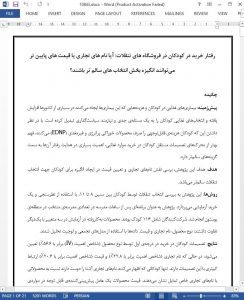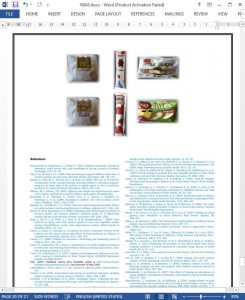Abstract
Background Children's dietary-related diseases and their associated costs have expanded dramatically in many countries, making children's food choice a policy issue of increasing relevance. As children spend a considerable amount of money on energy-dense, nutrient-poor (EDNP) products, a better understanding of the main drivers of children's independent food purchase decisions is crucial to move this behavior toward healthier options.
Objective The objective of the study is to investigate the role of branding and price in motivating children to choose healthier snack options.
Methods The study investigates snack choices of children ages 8 to 11, using a survey and a purchase experiment. The research took place in after-school programs of selected schools in the Boston area. Participants included 116 children. Products in the choice experiment differed on three factors: product type, brand, and price. Data were analyzed using aggregated and mixed logit models.
Results Children's purchase decisions are primarily determined by product type (Importance Value (IV) 56.6%), while brand (IV 22.8%) and price (IV 20.6%) prove to be of less relevance. Only those children who state that they like the familiar brand reveal a preference for the branded product in their purchase decision. Price is a significant predictor of choice when controlling for whether or not children obtain an allowance.
Conclusion It is not simple brand awareness but a child's liking of the brand that determines whether a brand is successful in motivating a child to choose a product. The extent of children's experience with money influences their price responsiveness. To the extent that children who receive an allowance are primarily the ones buying food snacks, higher prices for EDNP snacks could be successful in motivating children to choose a healthier option.
1. Introduction
In recent years, the incidence and prevalence of children's dietary-related diseases and their associated costs have grown dramatically in many countries, making children's food choice a policy issue of increasing relevance (CDC, 2015). To improve children's eating habits, various school-based interventions have been implemented in several countries (e.g., De Sa & Lock, 2008; Evans, Christian, Cleghorn, Greenwood, & Cade, 2012). However, those efforts might be offset by compensatory behavior of children at other times of the day (i.e., the consumption of energy-dense, nutrient-poor (EDNP) foods before or after school). This holds especially as children have a considerable amount of money at their disposal. Much of this is spent on food, especially on EDNP products (Borradaile et al., 2009; Cash & McAlister, 2011). Measures such as regulating food advertisements to children, as well as the implementation of fat or sugar taxes, acknowledge the direct and indirect economic activities of young consumers.
4. Discussion and conclusions
The results of our experiment and survey demonstrate that children's purchase decisions are primarily determined by product type, with most children in this sample showing a high and significant preference for chocolate chip cookies. In addition, our findings reveal that liking is of considerable importance for the product type children choose, an outcome that is in line with previous studies. Brug, Tak, te Velde, Bere, & De Bourdeaudhuij (2008), De Bourdeaudhuij et al. (2008) and Rasmussen et al. (2006) found a positive association between liking and consumption of fruits and vegetables. McKinley et al. (2005) also stress the relevance of taste and product liking for children's product choice. Those researchers showed in their qualitative study that children seem to be especially “reluctant to ‘risk’ spending their money on something that was not guaranteed to taste good” (McKinley et al., 2005, p. 547).











